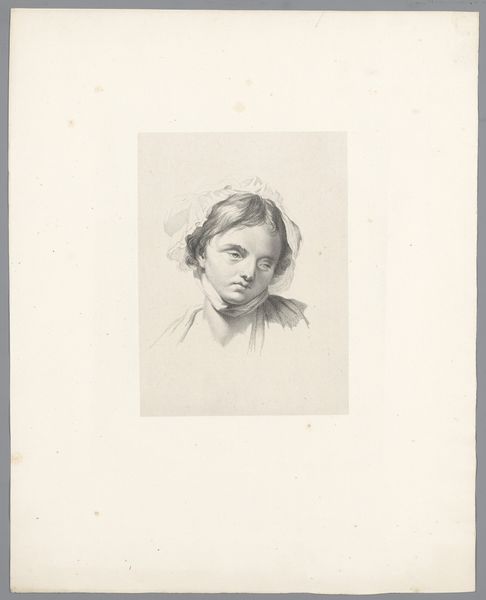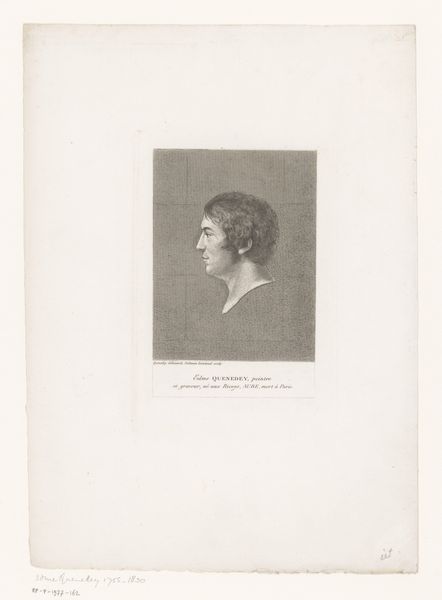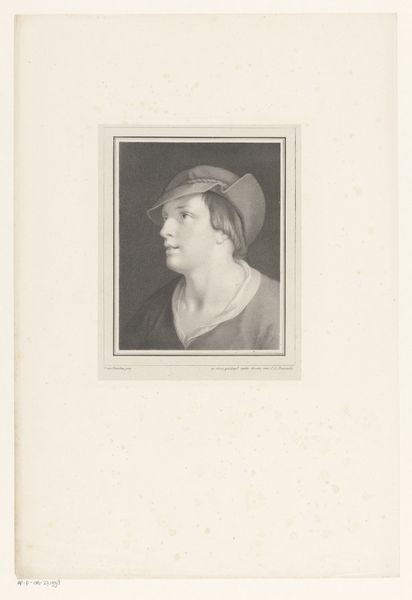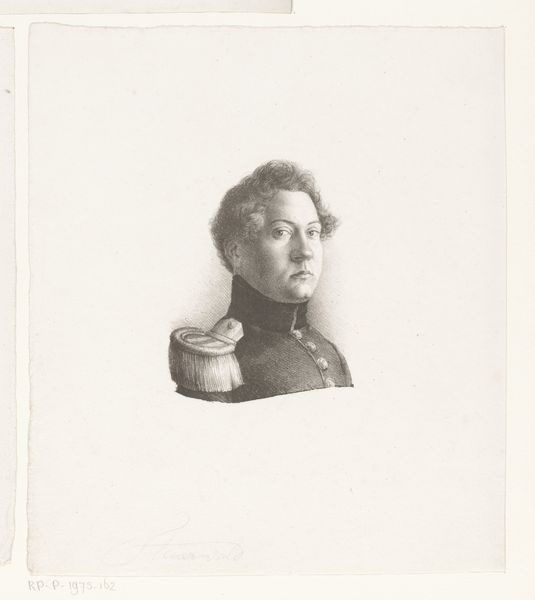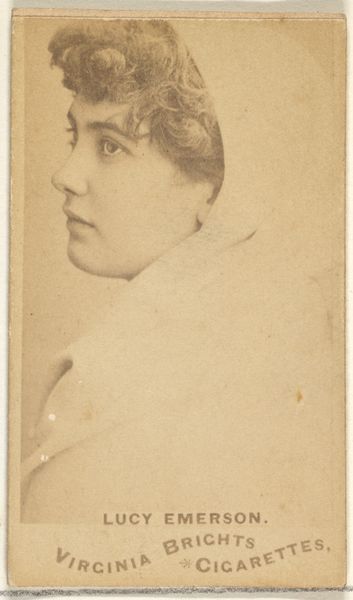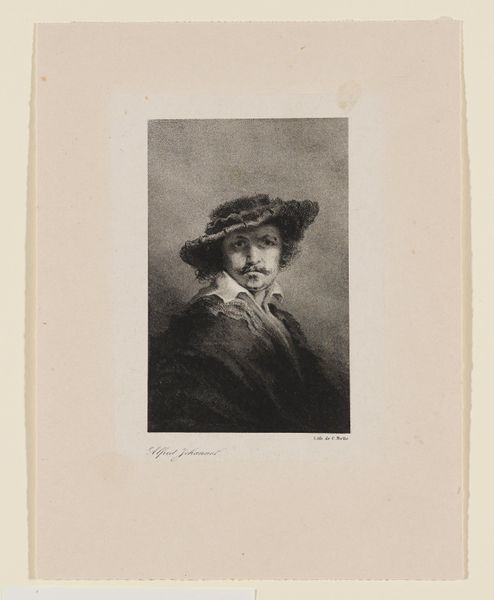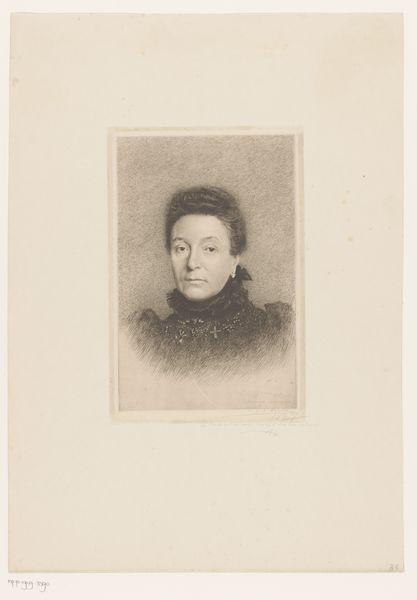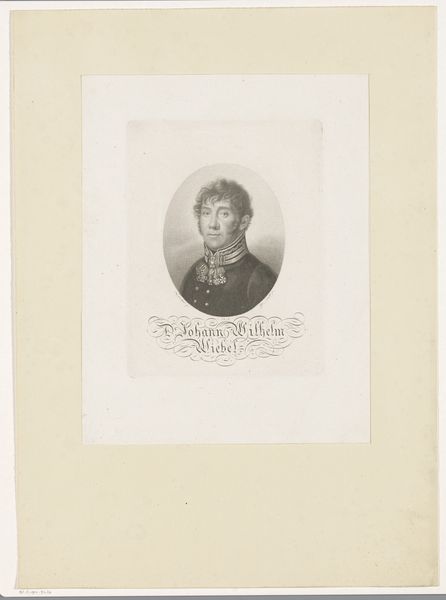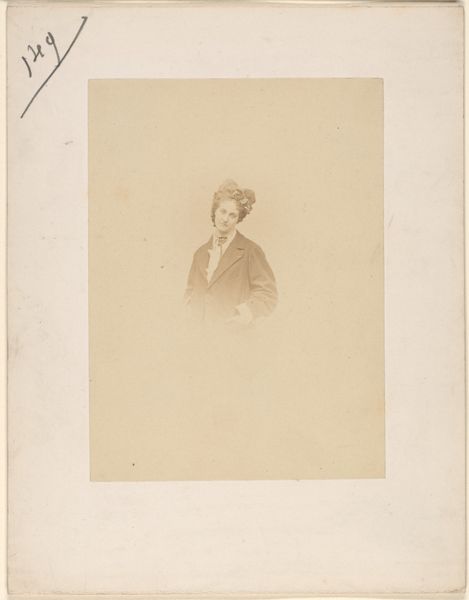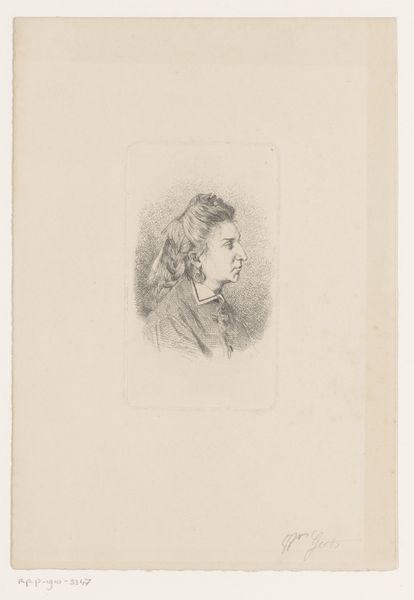
drawing, pencil
#
portrait
#
drawing
#
pencil drawing
#
pencil
#
academic-art
#
realism
Dimensions: height 103 mm, width 73 mm
Copyright: Rijks Museum: Open Domain
Editor: Here we have Carl Bloch’s 1880 pencil drawing, "Portrait of a Woman with a Shawl." There’s something so direct about her gaze, and the simplicity of the medium really emphasizes the realism. What strikes you about this work? Curator: Oh, absolutely. Her gaze, that unflinching directness – it feels almost confrontational, doesn't it? The beauty of a pencil drawing lies in its raw honesty; no colours to distract, just pure form and shadow. Bloch was a master of religious painting, wasn't he? Do you see hints of that careful observation, that reverence for the human form, bleeding through here? Editor: I hadn't really thought of that connection, but now I see it. The draping of the shawl, it's almost like a religious garment, but less theatrical. More everyday, perhaps? Curator: Precisely! Think of how Renaissance painters used drapery – it's not just about clothing; it's about symbolism, status, even emotion. Bloch translates that classical language into something far more intimate, doesn't he? I wonder, who was this woman? A wife, a lover, a model barely making enough? I find myself inventing stories for her, projecting myself into that world through the veil of years gone by, and hoping to find a connection with another life. Editor: I'm now picturing her story. I hadn’t considered how that academic tradition mixed with realism to convey those everyday narratives. I guess I assumed academic art was just paintings of Greek myths. Curator: (Laughs) Myths are amazing and also need dusting sometimes. Now, you see academic art as just Greek myths and this new perspective with intimate connections, it all circles back! Editor: So true! Thanks. It definitely encourages me to think more broadly about historical and personal context in art.
Comments
No comments
Be the first to comment and join the conversation on the ultimate creative platform.
